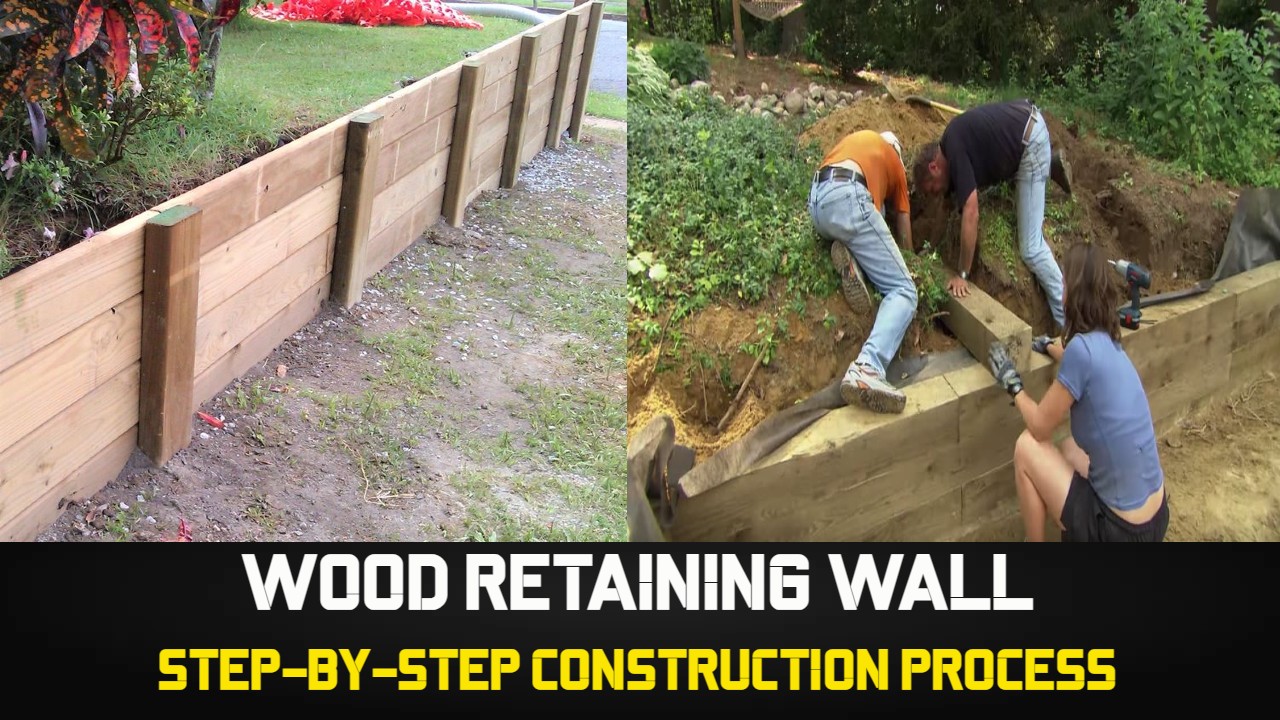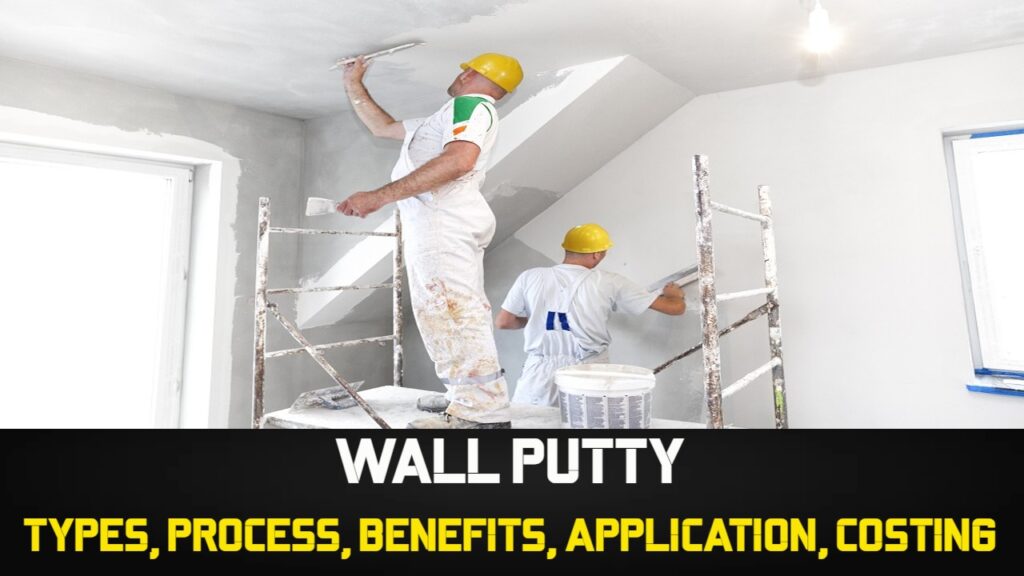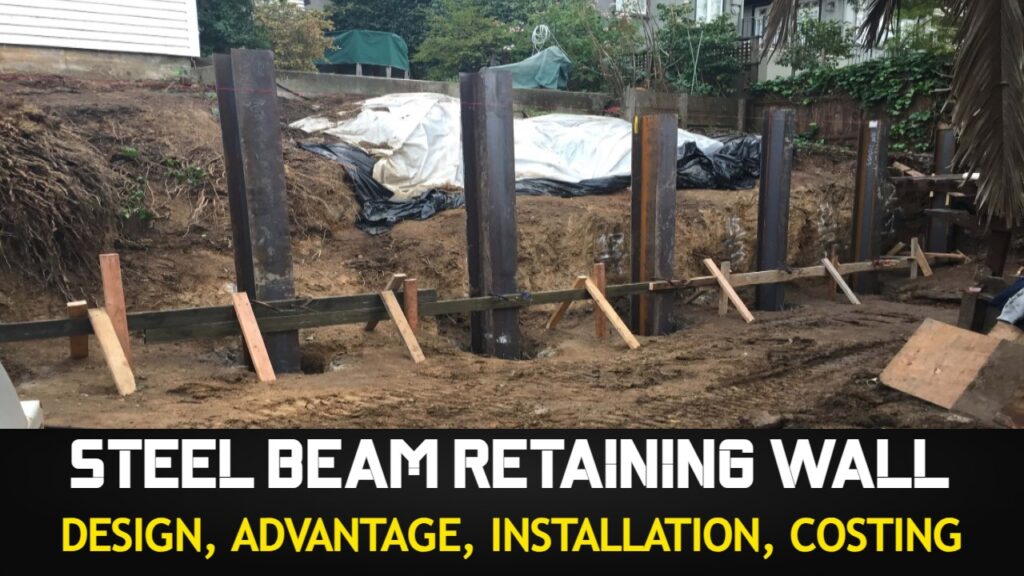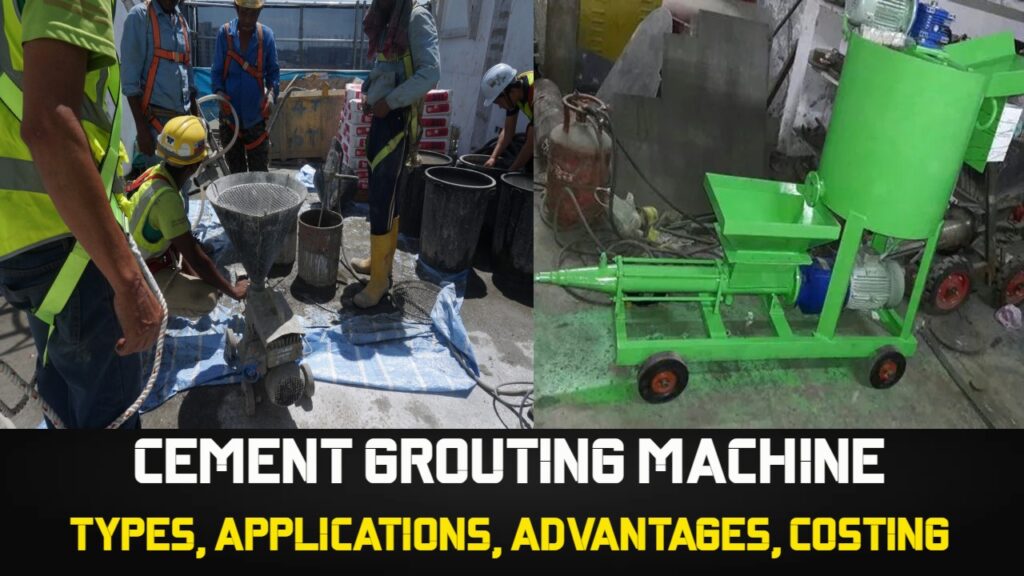Are you trying to improve your landscape in a way that is both attractive and useful? Think about including a wood retaining wall. Retaining walls are constructions used to hold back dirt, stop erosion, and beautify and characterize outdoor areas. We will examine the advantages, method of construction, and maintenance advice for wood retaining walls in this post. Continue reading to learn how your property might be transformed by this adaptable feature.
Contents
- 1 Introduction
- 2 The Importance of Retaining Walls
- 3 Types of Retaining Walls
- 4 Wood Retaining Wall Ideas
- 5 Benefits of Wood Retaining Walls
- 6 Planning and Designing Your Wood Retaining Wall
- 7 Materials and Tools Needed
- 8 Step-by-Step Construction Process
- 9 Maintaining Your Wood Retaining Wall
- 10 Enhancing Your Wood Retaining Wall with Landscaping
- 11 Adding Lighting Features to Your Retaining Wall
- 12 Safety Considerations
- 13 Cost Analysis
- 14 Hiring a Professional vs. DIY
- 15 Conclusion
- 16 Frequently Asked Question (FAQs)
Introduction
Creating tiered gardens, controlling water runoff, delineating outdoor living spaces, and avoiding soil erosion are just a few of the many uses for retaining walls. Particularly wood retaining walls have a rustic charm and natural appeal that blends with many building types. A wood retaining wall might be a great option if you want to level a sloped yard or improve the aesthetic appeal of your landscaping.
The Importance of Retaining Walls
Maintaining the integrity of your environment requires the use of retaining walls. They stop soil erosion brought on by gravity and natural factors such runoff from rain. Retaining walls shield your property from potential harm, such as slope failure or the collapse of embankments, by keeping the soil in place. Additionally, they assist in establishing useable space on uneven terrain, improving the functionality and aesthetic appeal of your outdoor spaces.

Types of Retaining Walls
Retaining walls come in a variety of styles, including those made of concrete, stone, brick, and wood. Each material has particular benefits, but in this essay we’ll concentrate on the advantages and building of wood retaining walls. Due to its adaptability, affordability, and capacity to mix in well with the surrounding environment, wood retaining walls are popular.
Also Read: Steel Beam Retaining Wall: A Sturdy Solution for Structural Stability
Wood Retaining Wall Ideas
Classic Timber Wall: Use pressure-treated wood or hardwood to build a conventional wooden retaining wall. This style offers a classic, rustic appearance that fits in nicely with the environment.
Tiered Garden Beds: Use retaining walls to build wooden garden beds on various levels. This method makes planting and upkeep easier while also adding aesthetic appeal and serving the objective of soil retention.
Gabion and Wood Combo: Combine wood with gabion baskets that have gravel or stones within. Use wooden panels to face the gabion framework for a distinctive, contemporary look.
Stacked Logs: Make the retaining wall out of huge, piled logs for a more organic, natural look. The use of this strategy is especially effective in rural or wooded environments.
Curved Wood Wall: To give your environment more fluidity and tenderness, think about bending the wooden retaining wall rather than building it in straight lines. This layout may produce a sensation of motion and aesthetic appeal.
Recycled Pallet Wall: Build an ecologically friendly retaining wall from used wooden pallets. Pallets may be turned into a beautiful and useful wall with a little imagination and DIY know-how.
Terraced Steps: Create terraced levels in your retaining wall design by including wooden stairs. This not only provides a workable solution for sloping landscapes but also elevates the overall appearance with a touch of elegance.
Planter Boxes: Along the retaining wall’s whole length, place planter boxes. With the addition of color and vegetation, this design transforms the wall into a dynamic vertical garden.
Lattice Panels: Use lattice panels to add seclusion and a gorgeous backdrop for climbing plants to your timber retaining wall. This layout enables a harmony between containment and openness.
Integrated Seating: Create sitting places or built-in wooden seats into the top of the retaining wall. It changes the wall into a useful and welcoming area where you can unwind and take in your surroundings outside.
Remember to pick the most appropriate design for your environment and to guarantee good structural stability before implementing any wood retaining wall ideas.
Also Watch: How to Calculate Concrete Volume of Retaining Wall
Benefits of Wood Retaining Walls
Natural Aesthetics
Retaining walls made of wood give any landscape a cozy and welcoming atmosphere. An setting that is aesthetically pleasant and harmonious is produced by the inherent grain, texture, and earthy tones of wood. Wood retaining walls may be tailored to fit your tastes, whether you want a modern or classic aesthetic.
Versatility and Customization
Wood is a strong, adaptable material with countless design options. You may simply cut and mold it to make curves, corners, or straight lines so that the wall will fit the specific characteristics of your environment. Additionally, wood retaining walls may be painted or stained to fit the color scheme you want.
Cost-Effectiveness
Wood is a more affordable alternative for retaining walls than other materials like concrete or stone. Wood is a popular option for homeowners who want to upgrade their outdoor areas without going over budget because of the reduced initial cost of the material and the ease of installation.
Ease of Construction
Construction of wood retaining walls is not too difficult, especially for those with some basic DIY knowledge. With the appropriate equipment and supplies, you may start a worthwhile project that raises the value of your home. To maintain the durability and stability of the wall, it is crucial to use suitable design, building methods, and drainage.
Eco-Friendly Option
Since wood is a renewable resource, using it for your retaining wall is ecologically good. Making use of recycled or wood from sustainable sources might help your project become even more environmentally friendly. Utilizing wood helps to reduce carbon footprint and advance a more environmentally friendly future.
Also Read: Evolution of Retaining Structures
Planning and Designing Your Wood Retaining Wall
It is essential to thoroughly plan and design your wood retaining wall before starting the building process. Here are some crucial actions to think about:
Step 1: Assess Your Needs
Decide what you want your retaining wall to accomplish. Are you trying to level a sloping yard, build terraced gardens, or just make it appear better? Having a clear understanding of your objectives will aid in your decision-making during the planning and building processes.
Step 2: Site Evaluation
Analyze the location of the retaining wall installation. Take into account elements including soil type, drainage, slope aspect, and any current vegetation. Your wood retaining wall’s proper design, size, and material requirements may be determined with the use of this evaluation.
Step 3: Obtain Permits
To find out if a permission is needed to build a wood retaining wall, contact your local government. To guarantee compliance with building standards and laws, you might need to get authorization depending on the height and placement of the wall.
Step 4: Design Considerations
Design something that combines both beauty and practicality. Establish the wall’s height, breadth, and length as well as any other features like steps or seating spaces. To guarantee that the retaining wall merges in seamlessly with its surroundings, take into account the general design and concept of your environment.
Also Read: Modular Kitchen Colour Combination: A Guide to Creating a Stunning Kitchen!
Materials and Tools Needed
You’ll need the following supplies and equipment to build a wood retaining wall:
Materials:
- Pressure-treated lumber or naturally rot-resistant wood
- Gravel or crushed stone
- Landscape fabric
- Drainage pipe
- Fasteners (nails, screws, or timber connectors)
- Concrete mix (if needed for footings)
Tools:
- Measuring tape
- Level
- Shovel
- Wheelbarrow
- Hammer or nail gun
- Power drill
- Saw
- Safety equipment (gloves, goggles, etc.)
Please be aware that depending on the design and specifications of your wood retaining wall, different equipment and materials may be required. For precise suggestions, it is critical to seek expert advice or examine thorough building manuals.
Step-by-Step Construction Process
Excavation and Preparation
- Stakes and thread are used to mark the wall’s outline.
- Excavate the area as needed, leaving room for the drainage system, the base, and the backfill.
- To lay a solid foundation, compact the earth.
Install Drainage
- To stop weed growth, place landscaping cloth around the trench that was dug.
- To divert water away from the wall, place a perforated drainage pipe at the bottom of the trench.
- To ensure optimum drainage, backfill the trench with gravel or crushed stone.
Build the Base
- Install the first row of timbers horizontally and attach them firmly to the ground.
- Verify the level and make any required adjustments.
- Pour a concrete foundation if more stability is required.
Construct Additional Rows
- Timbers should be stacked in successive rows, with the joints spaced apart for strength.
- Use the proper fasteners to join each row to the one below.
- Continue to construct higher, making sure that each layer is stable and level.
Backfill and Compact
- Gravel or crushed stone should be used to backfill the area behind the wall.
- Backfill material should be well compacted in order to prevent settling, therefore compact it in thin layers.
Finish and Enhance
- To get a smooth finish, trim any extra wood and sand the edges.
- To improve the wood’s strength and look, apply a protective sealer or stain.
- To further enhance the appearance of the area surrounding the retaining wall, think about adding landscaping components like plants or mulch.
Maintaining Your Wood Retaining Wall
Your wood retaining wall has to be properly maintained in order to last longer and remain appealing. To make sure it endures, remember these suggestions:
Regular Inspections
- At least twice a year, visually examine the retaining wall.
- Verify the area for decay, insect infestation, or structural deterioration symptoms.
- Any problems should be resolved as once to avoid future deterioration.
Cleaning and Stain Protection
- Use a mild detergent and a soft brush to remove dirt, debris, and moss from the wood’s surface.
- Every few years, use a protective sealer or stain to increase the wood’s resilience to moisture, UV light, and pests.
Address Drainage Concerns
- Make sure the drainage system is clean and effective.
- Examine the backfill material for any indications of blockage or erosion when cleaning the drainage pipe.
- Maintain the correct grade and slope to stop water from building up behind the wall.
Prune Vegetation
- In order to avoid root rot or excessive moisture retention, keep any vegetation close to the retaining wall regularly trimmed.
- Large trees and plants shouldn’t be planted too next to the wall since their root systems might damage it.
Enhancing Your Wood Retaining Wall with Landscaping
Consider adding landscaping features that enhance your wood retaining wall’s natural beauty to improve its aesthetic effect. Here are some suggestions to get you going:

- For a splash of color, grow colorful flowers or cascading vines around the top of the wall.
- To give depth and texture, design a garden with tiers using different plant species.
- To create a focal point, surround the base of the wall with ornamental boulders or stones.
- For a calming atmosphere, add a water feature, such a small waterfall or pond, close to the retaining wall.
- To draw attention to the texture of the wall and to create a welcoming ambiance at night, use landscape lighting.
You may turn your outside area into a compelling refuge by fusing your creativity with the rustic appeal of a wood retaining wall.
Adding Lighting Features to Your Retaining Wall
Your wood retaining wall’s utility and appearance can both be improved by appropriate lighting. A few alternatives for illumination are listed below:
Wall Wash Lights
- Install wall-mounted lighting that illuminates the retaining wall’s surface with a gentle, steady glow.
- This method brings out the color and texture of the wood, resulting in a cozy and welcoming environment.
Step Lights
- To enable safe travel in the dark, incorporate step lights into the retaining wall’s design.
- For a seamless appearance, these lights can be recessed into the wall or put on the face of each step.
Spotlights
- To draw attention to particular details or key spots along the retaining wall, strategically use lighting.
- To provide visual depth and intrigue, emphasize certain aspects of the architecture or certain flora or other components.
Solar-Powered Lights
- To illuminate your wood retaining wall, think about using solar-powered, eco-friendly lights.
- These lights don’t require electrical wiring since they use the sun’s energy during the day to provide a gentle glow at night.
To guarantee the secure installation of any electrical components, don’t forget to get the advice of a qualified electrician or lighting specialist.
Safety Considerations
While building a wood retaining wall may be a satisfying undertaking, safety must always come first. Here are a few crucial things to remember:
Proper Structural Design
Make that the wall is built to resist the lateral pressure that the dirt it holds exerts. If required, get the advice of a structural engineer.
Depth and Dimensions
Based on the unique site circumstances and needs, choose the proper retaining wall’s depth and proportions.
Secure Fastening
To maintain the stability and strength of the wall, use the proper fasteners, such as nails, screws, or timber connectors.
Wood Retaining Wall Drainage
To avoid water accumulation and potential wall damage, install a reliable drainage system for wood retaining walls.
Protective Gear
Wear the proper safety equipment, such as gloves, goggles, and supportive footwear, when working with tools or building materials.
You can build a wood retaining wall that not only improves your landscape but also gives you piece of mind by putting safety first throughout the construction process.
Cost Analysis
A wood retaining wall’s construction cost can change depending on the wall’s height, length, and degree of design intricacy, as well as on local labor and material costs. In general, wood retaining walls are more affordable than those made of concrete or stone.
An approximate range for the price of a wood retaining wall’s supplies and installation is $15 to $30 per square foot. To gain a more precise idea of the overall costs, it is suggested to request estimates from local suppliers and contractors.
Hiring a Professional vs. DIY
Depending on a number of variables, including your degree of experience, your available time, and the intricacy of the design, you should decide whether to employ a professional or take on a DIY project. While constructing a wood retaining wall may be a satisfying DIY project, it’s important to be realistic while evaluating your talents and abilities.
It could be wiser to engage a qualified contractor if you have little expertise with building or don’t have the required tools. They will guarantee correct planning, construction methods, and respect to regional building regulations, resulting in a retaining wall that is long-lasting and attractive to the eye.
Conclusion
Your environment may be completely changed by a wood retaining wall, which offers both beauty and practicality. Wood is a popular material for retaining walls because of its natural beauty, adaptability, and affordability. You may create a beautiful outdoor environment that raises the attractiveness and value of your house by using correct planning, building methods, and upkeep procedures.
Why then wait? By include a wood retaining wall, you may start the process of constructing the landscape of your dreams. Prepare to appreciate your outdoor sanctuary’ elegant fusion of architecture and nature.
Frequently Asked Question (FAQs)
How long does a wood retaining wall last?
A wood retaining wall’s lifespan might vary depending on the kind of wood, how it is maintained, and the environment where it is located. A well-built and regularly maintained wood retaining wall may typically last 15 to 25 years.
Can I build a wood retaining wall on my own?
A wood retaining wall may be built if you have the required equipment and some basic DIY abilities. To maintain the stability and lifespan of the wall, it is necessary to use suitable design, building methods, and adequate drainage. Take into account seeking advice from experts or using comprehensive building manuals.
Are there any alternatives to wood for retaining walls?
Yes, Wood is not the only material that can be used to build retaining walls. Popular choices include engineered materials like concrete panels or gabions, natural stone, brick, and concrete blocks. Before choosing a material, it’s important to examine your unique demands and preferences since each material has pros and disadvantages of its own.
Can I incorporate seating into my wood retaining wall?
Yes, You might include chairs in the design of your wood retaining wall. You may make a useful seating space that integrates in with the general design by adding a broad cap or ledge to the top row of the wall. To guarantee stability and safety, just make sure the seating area is appropriately strengthened.
How can I prevent soil erosion behind the wood retaining wall?
To stop soil erosion behind the wood retaining wall, proper drainage is essential. A perforated drainage pipe and gravel or crushed stone backfill should be included in the wall’s well-designed drainage system. This arrangement will assist in diverting water away from the wall and reducing soil pressure.






